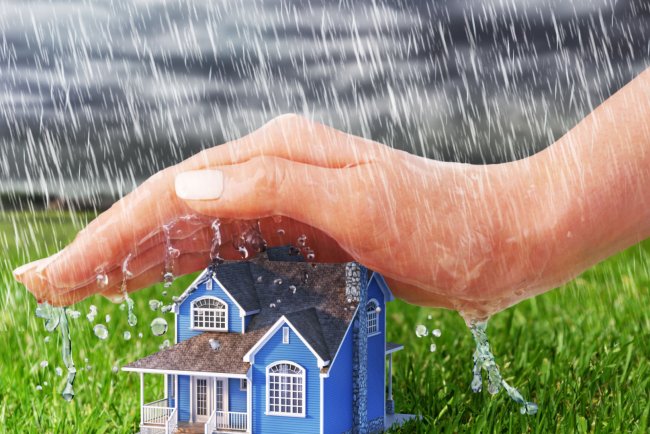How to Do a Homeowners Insurance Estimate
Estimating your homeowners insurance is a crucial step in ensuring you have the right coverage to protect your home and belongings.

Homeowners insurance is essential for protecting your property and belongings from unforeseen events like natural disasters, theft, or accidents. However, determining the right amount of coverage and estimating your insurance needs can be complex. This guide will walk you through the process of estimating your homeowners insurance, ensuring you have the right coverage for your needs without overpaying.
Understanding Homeowners Insurance
Before diving into estimates, it’s important to understand what homeowners insurance covers. Generally, homeowners insurance provides coverage for:
- Dwelling: Protection for the structure of your home.
- Personal Property: Coverage for your belongings inside the home.
- Liability: Protection against legal claims for injuries or damages caused by you or your family.
- Additional Living Expenses (ALE): Coverage for living costs if you’re temporarily unable to live in your home due to a covered event.
Step-by-Step Guide to Estimating Your Homeowners Insurance
Determine Your Home’s Replacement Cost
The replacement cost is the amount needed to rebuild your home from scratch if it were destroyed. This figure differs from the market value of your home, as it excludes land costs and reflects only the cost to rebuild.
How to Calculate Replacement Cost
- Assess Home Size and Features: Measure the square footage of your home and note key features like the number of floors, the type of roofing, and exterior materials.
- Use Online Estimators: Many insurance companies provide online calculators to estimate replacement costs based on your home’s features and local building costs.
- Consult with Professionals: Consider hiring a professional appraiser or contractor who can provide a detailed estimate based on current construction costs in your area.
Evaluate Your Personal Property
Personal property coverage protects your belongings inside the home, including furniture, electronics, and clothing. To estimate this coverage:
- Create a Home Inventory: List and document your belongings, including their value. You can use a home inventory app or spreadsheet for this task.
- Estimate Replacement Costs: Assess the cost to replace each item on your list, considering current prices.
- Total the Value: Sum the replacement costs to determine the amount of personal property coverage you need.
Assess Liability Coverage Needs
Liability coverage protects you from financial loss if you’re found legally responsible for someone else’s injury or property damage. While the amount of liability coverage varies, a common recommendation is to have coverage that matches your assets.
How to Determine Liability Coverage
- Evaluate Your Assets: Consider the value of your savings, investments, and other assets that could be at risk.
- Consider Legal Risks: Think about potential risks, such as hosting parties or having a pool, which could increase your liability exposure.
- Choose Coverage Limits: Typically, liability coverage ranges from $100,000 to $500,000. You may choose higher limits if you have significant assets.
Calculate Additional Living Expenses (ALE)
ALE coverage helps cover costs if you need to live elsewhere while your home is being repaired. This includes hotel stays, meals, and other living expenses.
How to Estimate ALE Coverage
- Determine Your Living Costs: Calculate your current monthly expenses, including mortgage or rent, utilities, and other living costs.
- Factor in Temporary Costs: Estimate additional costs for temporary housing and meals if you’re displaced.
- Select Coverage Limits: ALE coverage is typically a percentage of your dwelling coverage (e.g., 20%). Ensure you have enough to cover your temporary living expenses for a reasonable period.
Review Deductibles and Coverage Options
Your deductible is the amount you pay out-of-pocket before insurance coverage kicks in. Choosing a higher deductible often reduces your premium, but it means more cost upfront in the event of a claim.
How to Choose Deductibles and Coverage Options
- Evaluate Your Financial Situation: Determine how much you can afford to pay out-of-pocket in the event of a claim.
- Compare Deductible Amounts: Review different deductible options and their impact on your premium.
- Consider Additional Coverage: Explore optional coverages like flood or earthquake insurance, which may be necessary depending on your location and risk factors.
Gather Quotes from Multiple Insurers
Once you have a clear estimate of your coverage needs, it’s time to gather quotes from various insurance companies. Comparing quotes ensures you find the best coverage at the most competitive price.
How to Obtain and Compare Quotes
- Provide Accurate Information: When requesting quotes, provide detailed and accurate information about your home, personal property, and coverage needs.
- Use Online Tools: Many insurers offer online quote tools that allow you to compare coverage and premiums.
- Consult with Agents: Speak with insurance agents who can provide personalized quotes and answer questions about coverage options.
Review and Adjust Your Coverage Regularly
Your insurance needs can change over time due to renovations, new purchases, or changes in your financial situation. Regularly reviewing and adjusting your coverage ensures it remains adequate and relevant.
How to Review and Adjust Coverage
- Annual Review: Review your policy and coverage limits annually or when significant life events occur (e.g., buying a new home or major renovations).
- Update Home Inventory: Regularly update your home inventory to reflect new purchases or changes in the value of your belongings.
- Consult with Your Insurer: Discuss any changes with your insurer to adjust your coverage as needed.
Common Mistakes to Avoid
1. Underestimating Replacement Costs
One of the most common mistakes is underestimating the replacement cost of your home. Ensure you have an accurate estimate to avoid being underinsured in the event of a total loss.
2. Overlooking Personal Property
Focusing only on dwelling coverage while neglecting personal property can lead to insufficient coverage for your belongings. Ensure your personal property estimate is comprehensive and up-to-date.
3. Ignoring Liability Risks
Underestimating liability coverage can leave you vulnerable to significant financial loss. Assess your risks and choose liability coverage that adequately protects your assets.
4. Choosing the Wrong Deductible
Selecting a deductible that’s too high or too low can impact your premium and out-of-pocket costs. Choose a deductible that aligns with your financial situation and risk tolerance.
5. Failing to Update Coverage
As your life circumstances change, your insurance needs may evolve. Regularly review and update your policy to ensure it remains aligned with your current situation.
Estimating your homeowners insurance is a crucial step in ensuring you have the right coverage to protect your home and belongings. By following this guide, you can accurately assess your insurance needs, obtain competitive quotes, and make informed decisions about your coverage. Regular reviews and updates will help you maintain adequate protection and avoid common pitfalls. Protecting your home is an investment in peace of mind, and a well-estimated homeowners insurance policy is a key component of that protection.
Frequently Asked Questions (FAQs)
1. What is homeowners insurance?
Homeowners insurance provides financial protection for your home and belongings in the event of damage or loss due to events such as natural disasters, theft, or accidents. It typically includes coverage for the dwelling, personal property, liability, and additional living expenses.
2. How do I determine the replacement cost of my home?
To determine the replacement cost of your home, assess its size, features, and construction materials. You can use online calculators, consult with professionals like appraisers or contractors, or get estimates from insurance companies based on local building costs.
3. Why is personal property coverage important?
Personal property coverage protects your belongings inside the home, such as furniture, electronics, and clothing. Estimating this coverage ensures that you have enough protection to replace your possessions in the event of a covered loss.
4. How can I create a home inventory?
Create a home inventory by listing and documenting your belongings, including their value. Use a home inventory app, spreadsheet, or written list to track items and their replacement costs. Update this inventory regularly to reflect new purchases or changes.
5. How much liability coverage should I have?
Liability coverage protects you from financial loss if you’re legally responsible for someone else’s injury or property damage. A common recommendation is to have liability coverage that matches your assets, typically ranging from $100,000 to $500,000 or more, depending on your risk exposure and financial situation.
6. What is Additional Living Expenses (ALE) coverage?
ALE coverage helps cover the costs of temporary housing, meals, and other expenses if your home is uninhabitable due to a covered event. It is usually a percentage of your dwelling coverage (e.g., 20%). Estimate your living costs and select coverage limits that adequately cover potential temporary living expenses.
7. How does the deductible affect my homeowners insurance?
The deductible is the amount you pay out-of-pocket before your insurance coverage applies. Choosing a higher deductible generally lowers your premium but means you will pay more out-of-pocket in the event of a claim. Choose a deductible that fits your financial situation and risk tolerance.
8. How do I obtain and compare homeowners insurance quotes?
To obtain and compare quotes, provide accurate information about your home, personal property, and coverage needs to multiple insurance companies. Use online quote tools, consult with insurance agents, and review coverage options and premiums to find the best policy for you.
9. Why is it important to review my homeowners insurance policy regularly?
Regular reviews ensure that your policy reflects the current value of your home and belongings and addresses any changes in your insurance needs. This helps avoid overpaying for coverage or being underinsured in the event of a claim.
10. What are common mistakes to avoid when estimating homeowners insurance?
Common mistakes include underestimating the replacement cost of your home, overlooking personal property coverage, choosing inadequate liability coverage, selecting an inappropriate deductible, and failing to update your policy with changes in your life circumstances.
11. Can I adjust my homeowners insurance coverage after I purchase a policy?
Yes, you can adjust your homeowners insurance coverage after purchasing a policy. If you make significant changes to your home, acquire new belongings, or experience changes in your financial situation, contact your insurer to update your policy and ensure it meets your current needs.
12. What factors can affect my homeowners insurance premium?
Factors that can affect your premium include the replacement cost of your home, the value of your personal property, your claims history, the amount of liability coverage, your deductible, and any additional coverage options you choose.
13. How do safety features in my home impact my insurance estimate?
Safety features like burglar alarms, smoke detectors, and security systems can positively impact your insurance estimate by reducing the risk of loss or damage. Insurers may offer lower premiums or better coverage options for homes equipped with these features.
14. Is homeowners insurance required by law?
While homeowners insurance is not legally required by most states, it is often required by mortgage lenders to protect their investment. Even if it's not mandatory, having homeowners insurance is highly recommended to safeguard your property and belongings.
15. Can I negotiate my homeowners insurance premium?
While you may not be able to negotiate your premium directly, you can shop around with different insurers to find the best rate. Additionally, improving your home’s safety features, maintaining a clean claims history, and choosing a higher deductible can help lower your premiums.
What's Your Reaction?



















